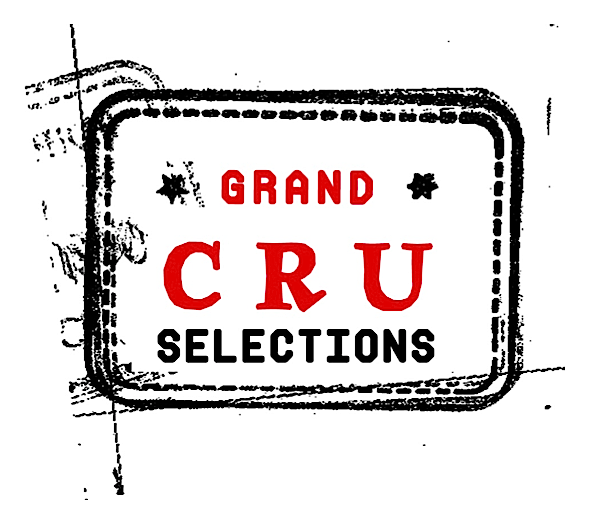Domaine Mee Godard
Morgon, Beaujolais, France
Mee Godard
Mee Godard moved to the Beaujolais and launched her domaine in 2013 with three very special climats of Morgon: Corcelette, Grand Cras, and Côte du Py. Since then she has had one goal in mind: to make vin de garde from great terroirs.
“Old terroir, new player. Godard trained at both Oregon State and Montpellier before settling in Morgon, and her winemaking blends carbonic and non-carbonic, for deeply structured wines.”
— Jon Bonné, Punchdrink.com
The Beaujolais is one of the few places in France where an aspiring vigneron can bootstrap the start of their own winery. We aren't using the word "bootstrap" lightly either. Mee Godard is a one woman show that prunes, farms, and runs a precise cellar. She is poised to be a big part of our perception of Morgon as the identity of Beaujolais continues to evolve with a new generation.
-
An oenologist by training, Mee Godard realized her dream by taking over the plots of an old winemaker (André Meyran) without heirs in 2012. She ended up with 1.7 ha (4.2 acre) of Morgon, Côte du Py, 2.3 ha (5.7 acre) of Morgon, Corcelette, and 1 ha (2.5 acre) of Morgon, Grand Cras and her small estate comprised of very old vines in the best terroirs of Morgon was born in 2013. She added a cuvée from Moulin-à-Vent in 2016 and makes a small amount of Beaujolais Blanc.
She likes wines with not a lot of extraction, where there is tannin and longer aging in wood. She describes her style as vin de garde - quality wine for aging. But these are certainly the modern style of Gamay from Morgon, achieving mineral complexity and roundness thanks to Burgundian-style whole bunch pressing and partial destem.
-
A soil study that began in 2009 to explore the different soils in the different Beaujolais AOP and concluded that Beaujolais has a unique type of gravel in the soil. They referred to it as “saprolyte” and are in the process of registering it in the international soil reference. Anne-Sophie’s Corcelette plot contains primarily “saprolyte.”
-
Right from the start, she began working lutte raisonnée but by 2016 she'd begun working organically, getting rid of herbicides and using mechanical tillage in 2017. The longer-term goal is to introduce biodynamic practices into the vineyard.
-
Mee prefers to use a fair amount of whole bunches. It depends on the vintage and the parcel but she usually de-stems only about half of the fruit. The length of her macerations vary but on average last 12 to 16 days in cement. She is aging her wines in a combination of vessels, always searching for the perfect balance of each for any given vineyard. She has mostly neutral barrels, foudre and demi-muids in her cellar.
Wines
Morgon Corcelette
The Corcelette vineyard is on south-east-facing granite slopes from two vineyards called Bellevue and Montillet. The vines, an average of 70 years old, are planted very densely at 11,000 vines/ha (4,500 vines/acre) and gobelet trained.
Morgon Côte du Py
Grown on soils known as roches bleues, a blend of 3 plots in the Cote du Py climats (lieux-dits: Chaponne, Morgon and Cote du Py). They are exposed north east, south west and south east. Vine density of 4,5000-5,000 vines/acre, goblet pruning and an average age of 65 years. Hand worked viticulture and harvested in small crates. Each plot was fermented in a separate tank and aged separately until blending. Maceration lasted 16-20 days. Aged in barrels, foudre and demi-muids for 11 months, followed by 3 months in tank.
Morgon Grand Cras
Coming from a 1 ha plot at the foot of Cote du Py, on a south-east colluvium slope. Vine density 4,500-5,000 vines/acre, gobelet pruning and an average of 40 years.
Morgon Passerrelle 557
Pasarrelle 557 is made from a selection of fruit from the schist and blue stone soils of her Cote du Py parcels. The wine is aged in a mix of foudres and demi-muids.
Passerrelle is French for “foot bridge.” It is an illusion to Mee's background and story. She and her sister are adopted. She found out later in life that her biological parents were involved in agriculture so winemaking for her has a special connection to her roots.
Moulin-a-Vent Les Michelons
"Les Michelons" from the Moulin-à-Vent appellation is found in the north of the appellation on a hillside plot, facing south/southwest, at an altitude of 400m. The soil is composed of pink granite decomposition and sand. First vintage from this parcel was in 2016.

